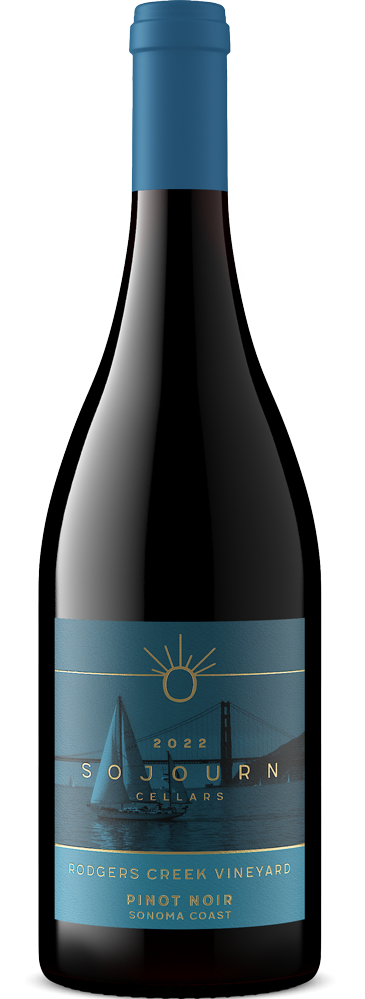2022 Rodgers Creek Vineyard Pinot Noir, Sonoma Coast
2022 Rodgers Creek Vineyard Pinot Noir, Sonoma Coast
Rodgers Creek Vineyard sits on a ridge in the teeth of the windy Petaluma Gap. Its cool climate and steep slopes are well suited for growing exceptional Pinot Noir. The 2022 vintage provided small clusters and tiny berries, resulting in a deep, concentrated wine. However, we produced only a small quantity due to low vineyard yields. This Pinot Noir offers layers of red fruit flavors with notes of earth and mushrooms. Pommard is the dominant clone, blended with clone 667. We fermented 25% of the grapes whole cluster, adding body and complexity.
SOLD OUTDownload The Fact Sheet

points
Owen Bargreen
"The 2022 ‘Rodgers Creek Vineyard’ sits high on a ridge in the Sonoma Coast AVA. This is rich and viscous Pinot Noir with serious focus and underlying tension. Rich cranberry and wild blackberry fruit flavors mingle well with freshly tilled soils and suggestions of bay leaf on the palate. Finishing long this dense and chewy bottling is already showing beautifully. " - Owen Bargreen
points
Wine Enthusiast
"This wine swirls a deep garnet as aromas of fresh-crushed black cherry, plum skin, forest floor and sarsaparilla emerge from the glass. The richly textured palate oozes with blackberry fruit, cedar, sage and anise flavors. This wine has a ponderous tannic structure and should soften nicely after a few years in the cellar." - Tom Capo, Wine Enthusiast
points
International Wine Report
"20% whole clusters are used during fermentation, and 50% new French oak is used during aging on the 2022 Rodgers Creek Pinot Noir. A shimmering medium ruby-blue core moves to a fluorescent purple rim, while producing boisterous aromas of blue plum flesh, mountain blueberries, grated chocolate, sweet Christmas spices, and cedary herbs. It’s pushing a full-bodied mouthfeel that works wonderfully with the earth and blue-fruit forward finish." - Jeremy Young, International Wine Report
Rodgers Creek Vineyard
Sonoma Coast, Petaluma Gap
Rodgers Creek Vineyard sits at 300 feet above sea level, between Sonoma and Petaluma, in the teeth of the wind and fog of the Petaluma Gap. The vines grow in light, chalky volcanic ash soils in steep inclines. This causes natural vine stress and gives the wine high concentration levels.

